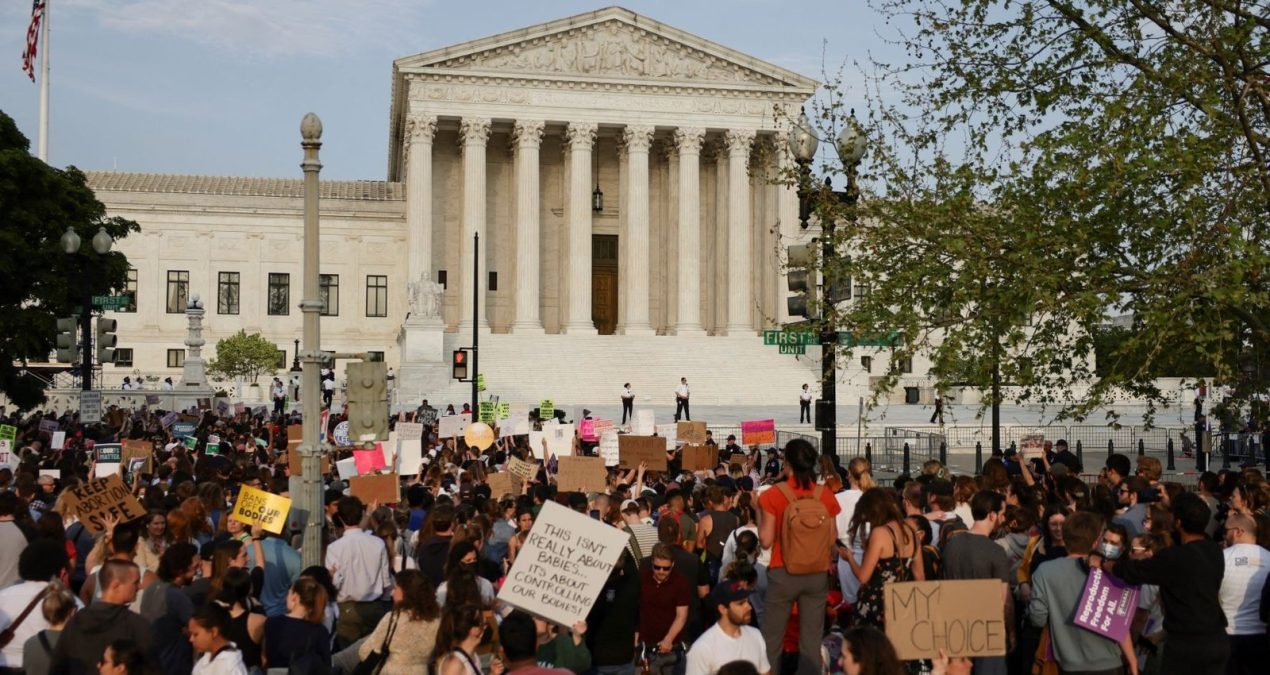Note: On the 24th of June 2022, the United States Supreme Court delivered its decision in Dobbs v Jackson Women’s Health and this later decision overturned the decision in Roe v Wade.
What is Roe v Wade in Simple Terms?
Roe v. Wade is a 1973 lawsuit that famously led to the United States Supreme Court making a ruling on abortion rights. Jane Roe (fictional name), an unmarried pregnant woman, filed the suit on behalf of herself and others to challenge Texas abortion laws. A Texas doctor joined Roe’s lawsuit, arguing that the state’s abortion laws were too vague for doctors to follow. He had previously been arrested for violating the statute.
At the time, abortion was illegal in Texas unless it was done to save the mother’s life. It was a crime to get an abortion or to attempt one.
In Roe v. Wade, the Supreme Court decided two important things:
- The United States Constitution provides a fundamental “right to privacy” that protects a person’s right to choose whether to have an abortion.
- But the abortion right is not absolute. It must be balanced against the government’s interests in protecting health and prenatal life.
Source: Roe v. Wade Case Summary: What You Need to Know
Brief Facts
In 1970, Jane Roe (a fictional name used in court documents to protect the plaintiff’s identity) filed a lawsuit against Henry Wade, the district attorney of Dallas County, Texas, where she resided, challenging a Texas law making abortion illegal except by a doctor’s orders to save a woman’s life. In her lawsuit, Roe alleged that the state laws were unconstitutionally vague and abridged her right of personal privacy, protected by the First, Fourth, Fifth, Ninth, and Fourteenth Amendments.
Decision of the United States Supreme Court in Roe v Wade
A central question before the Court was – Does the Constitution recognize a woman’s right to terminate her pregnancy by abortion?
Inherent in the Due Process Clause of the Fourteenth Amendment is a fundamental “right to privacy” that protects a pregnant woman’s choice whether to have an abortion. However, this right is balanced against the government’s interests in protecting women’s health and protecting “the potentiality of human life.” The Texas law challenged in this case violated this right.

First, the Court considered whether the case was moot, concluding that it was not. When the subject of litigation is “capable of repetition yet evading review,” a case need not be dismissed as moot. Pregnancy is a “classic justification for a conclusion of nonmootness.”
The Due Process Clause of the Fourteenth Amendment protects the right to privacy from state action , and a woman’s right to choose to have an abortion falls within that right to privacy. A state law that broadly prohibits abortion without respect to the stage of pregnancy or other interests violates that right. Although the state has legitimate interests in protecting the health of pregnant women and the “potentiality of human life,” the relative weight of each of these interests varies over the course of pregnancy, and the law must account for this variability.
In the first trimester of pregnancy, the state may not regulate the abortion decision; only the pregnant woman and her attending physician can make that decision. In the second trimester, the state may impose regulations on abortion that are reasonably related to maternal health. In the third trimester, once the fetus reaches the point of “viability,” a state may regulate abortions or prohibit them entirely, so long as the laws contain exceptions for cases when abortion is necessary to save the life or health of the mother.
Source: “Roe v. Wade.” Oyez, www.oyez.org/cases/1971/70-18. Accessed 31 May. 2023.
